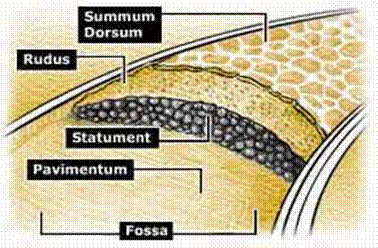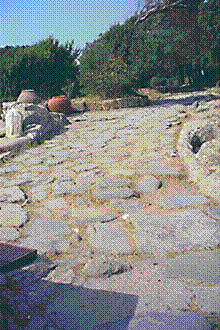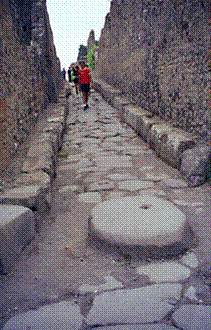
Location of the Galatian Churches

During the days of Paul there were two areas known as Galatia. The oldest was the geographical territory of a Celtic people (Gauls) that had migrated from southern Europe. Galatia had more recently been used to identify a province organized by the Romans.
History 278 BC Gauls of Southern Europe had migrated to North Asia Minor 232 BC The state became known as Galatia 25 BC The last independent ruler of Galatia, King Amyntas, gave his kingdom to Rome and Galatia became a Roman province.
Northern Galatia Northern Galatia included Pessinus, Ancyra, Tavium. They differed from Southern Galatia in language, occupation, nationality and social organization. They were: Gauls Sheperds Had little commerce Had few roads Southern Galatia Southern Galatia was called Galatia by the Romans because it was reorganized into a province that included the original Galatia. Greek rulers had planted colonies of Jews and Greeks along these highways. The Caesars had continued to plant colonies to secure the roads for the legions of rome and for commerce. It included the cities of Pisidian Antioch, Iconium, Lystra, Derbe. Southern Galatia was: Full of flourishing cities Had constant commerce Had the main highways that connected the East with Rome Religious Background Religion in Southern Galatians cities was more oriental than Greek and involved degraded sensuous worship. Greek philosophy and Roman morality demanded higher expectations from human’s duty and government than the Eastern religions provided. Jewish synagogues had spread into these areas and gave an alternative option that included truth and holiness. The Gentiles could received the standard of truth and holiness from Judaism, but did not embrace the temple and sacrifices.
Paul’s Message Paul’s message included faith in Christ, deliverance from the corrupt world system and Jewish ethics. Paul’s message brought salvation to the Gentiles, but at the same time unraveled the core of Judaism (the law, temple and sacrifices.) Paul’s Audience The people who heard Paul’s message in this case where the citizens of southern Galatia. They were Greeks and Jews and not Gauls. They were citizens of flourishing cities on the highways of commerce and government. Paul’s Use of Roman Roads Acts 13:4-14:28 Paul sailed to Perga He then took the highway to Pisidian Antioch. This highway continued into Ephesus to the West. Paul’s intention appears to be to take the road into Ephesus. (He could have gone by sea but the autumn seas are rough.) If he had planned to go through Galatia he would have went by land up through Tarsus as he did on his second trip. But, instead of going on into Ephesus, Paul turned and went into southern Galatia. The reason is in Gal. 4:13. Roman Roads The Roman road system was quite remarkable in its extent - from throughout Britain in the west, to the Tigris-Euphrates Rivers (today Iraq) in the east, and from the Danube River in central Europe to as far south as North Africa. The total length of hard-surfaced highways constructed by the Romans has been estimated to be well over 50,000 miles (80,000 kilometers), much of which is still visible today after so many centuries. Some of the most famous Roman Roads right in Italy were the 160 mile (260 kilometers) Via Appia, or Appian Way, which ran southeast from Rome down through Tarentum, then straight to the Adriatic coast; the Via Aurelia, running northwest up to Genoa; the Via Flaminia, that ran northeast to the Adriatic; the Via Aemilia, that crossed the Rubicon; the Via Valeria, eastward from Rome; the Via Latina, that ran southeast. With Rome as the "hub" of the system, came the now-famous saying that "All roads lead to Rome." The Roman Roads were also noted for the high quality of their construction. Most were straight, solid-surfaced, and cambered for drainage just as modern highways are today. Along with natural stone, they often used a form of concrete made from volcanic ash and lime. The vast Roman Road system facilitated Roman military conquest. Back then there were of course no transport aircraft or trucks, so the Roman legions traveled primarily on foot. The clear road system enabled troops to move relatively quickly across what was then still the wilderness of Europe. It also made possible the efficient administration of the conquered territories. The Roman Roads also served Christianity. Although the early Christians often suffered tremendous persecution from the Romans, the Roman Roads permitted the apostles and many of God's people (particularly those who held Roman citizenship) to travel much more easily, while protected by patrolling Roman troops from detachments who were stationed along the way.

The field engineer, assisted by a stake man aligned the road with a groma and ran levels with chorobates. A plow was used to loosen the soil and mark the trench (fossa) margins. Workmen dug trenches for a roadbed with a depth of 6 to 9 feet, carrying away the dirt in baskets. The earthen bed was tamped firm. The foundation of lime mortar or sand was laid to form a level base (pavimentum). Next came stones of about 4 to 5 in. in diameter, cemented together with mortar or clay (statument). This layer could be anywhere from 10 inches to 2 feet deep. The next course (rudus) was 9 to 12 inches of concrete filled with shards of pottery or stone. Atop this layer was the nucleus, a concrete made of gravel or sand and lime, poured in layers with each layer compacted with a roller. This layer was one foot at the sides and 18 inc. at the crown of the road. The curvature was to allow good drainage to the finished road. The top course was the summum dorsum, polygonal blocks of stone that were 6 inches or more thick and carefully fitted atop the still moist concrete. When a road bed became overly worn, this top course was removed, the stones turned over and replaced. A road was 9 to 12 feet wide which allowed 2 chariots to pass in each direction . Sometimes the road was edged with a high stone walkway. Milemarkers indicated the distance. A cart, fitted with a hodometer was used to measure distances. Later maps detailed routes, miles towns, inns, mountains and rivers. The first roads were quite straight going over hills rather than around them.



3) Reading of the Law and prophets 4) Sermon member of the congregation 5) Closing Blessing Paul’s Three Missionary Sermons in Acts In Antioch Pisidian 13:16-41 In Lystra 114:15-17 In Athens 17:22-31 Sermon in Antioch Pisidian 13:17-20 Four points concerning the Jewish faith: 1) God is God of Israel 2) God choose Israel 3) Egyptian Redemption 4) God gave them an Inheritance
1) Jesus was crucified 2) Jesus was laid in a tomb 3) God raised Jesus from the dead 4) Witnesses saw him alive Paul Three OT Verses to Justify the Faith Psalm 2:7 To teach the resurrection. “Become” is the Greek word “Gennao” and is also used in John 1:13 and John 3:5. It speaks of a new relationship. Isaiah 55:3 It had been promised to David that his “son” would be resurrected in the next verse Paul uses, Psalm 16:10. The connection is the word “holy”. First, “I will give you the HOLY and sure blessings. . .” and “You will not let your HOLY ONE see decay.” The exploitation of a common term to unravel its meaning was a common practice among rabbis. Paul had been trained by the rabbis. Habakkuk 1:5 The prophets warned that when these verses were fulfilled there would be Jews who would reject it. “Scoffers” in the Greek means “one who despises; one who thinks down on another.” In this case it is the word of God and the Holy Spirit being “scoffed at.” “Wonder” means to be amazed. “Perish” means to be destroyed so as to vanish and disappear. “Told you” means “to declare to relate in detail”. It is a double preposition in the compound which means it will be done the whole time right up to the end.